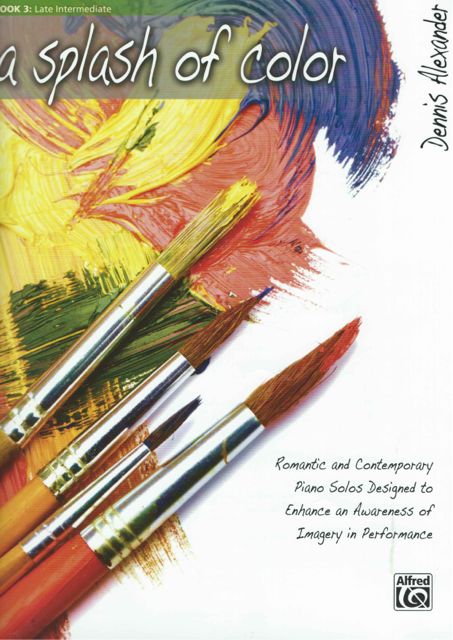Tango a la Mango (from "A Splash of Color" Bk. 3)

"Tango a la Mango" is one of my favorite pieces in "A Splash of Color", Bk. 3 and I'm delighted that the National Federation of Music Clubs has included it on their new 2014-2016 syllabus. The collection contains 7 colorful solos in romantic and contemporary styles designed to enhance an awareness of imagery in performance. When performing this piece, the performer needs to envision the seductive sounds of the tango style, along with the elegant and beautiful dancing that accompanies the music! The musical element that really sets tango apart from other song types is syncopation. Most often seen written in 2/4, it is characterized by being in a duple meter. Simple repeating syncopated rhythms (dotted eighth, 16th, 8th, 8th) are very commonly heard. Since the dance is supremely rhythmic in nature, it's important that any performance of a tango is accurate and very well controlled from a rhythmic standpoint.
Listen to Dennis Alexander perform this piece: Just go to my "Compositions" link, click on "Late Intermediate Solo Collections", scroll down until you see "A Splash of Color" Bk. 3. Then click on the 2nd "play" button.

(Click on score to enlarge)
I have thus marked the opening tempo "moderato e deciso" in the hope that all of these rhythmic figures will be played "decisively" and no faster than quarter note=63-69. The pedal markings should be strictly adhered to, in order to create the correct articulation and color of the dance. Be sure that students count the triplets in ms. 2 as two even sets of triplets (and not as two 16ths, followed by a triplet). Saying the words "trip-e-let, trip-e-let" at the very beginning of the measure starting on the 8th rest might be helpful for some students.
In ms. 6, be sure to cross the LH over the RH following the rapid group of 32nd notes. This makes the execution of this rhythm easier and more pronounced. Voice out those top notes in the RH chords from ms. 9-- 15.

The "B" section starts suddenly "mp" and is seductive, warm, and passionate. Listen for an ultra smooth, legato line; take a little time going into the beautiful D major chord on ms. 17. This is also often referred to as "rhythmic placement". This section modulates through several different keys, including a deceptive cadence at ms. 27, and leads into a dramatic cadenza beginning in ms. 31.

Take some time in ms. 30, with big sounds in the LH last 2 eighth notes. Start the cadenza slower, and then accelerando into ms. 33, count that half note FULL value, and then just "melt" into the return of the A section in ms. 35.

Again, voicing in the RH is important, just like in the first section. The piece ends quietly and mysteriously. Observe the pedaling; listen for exact rhythms in the LH patterns of ms. 49-51. In ms. 52, a 1/4 pedal with the staccato notes helps to create a wonderful color. Play the last two-note slurs delicately, and stretch that very last 16th note slightly, again "placing" the last 8th note just slightly past the down beat.
